1. The Pillory: A Public Spectacle of Humiliation
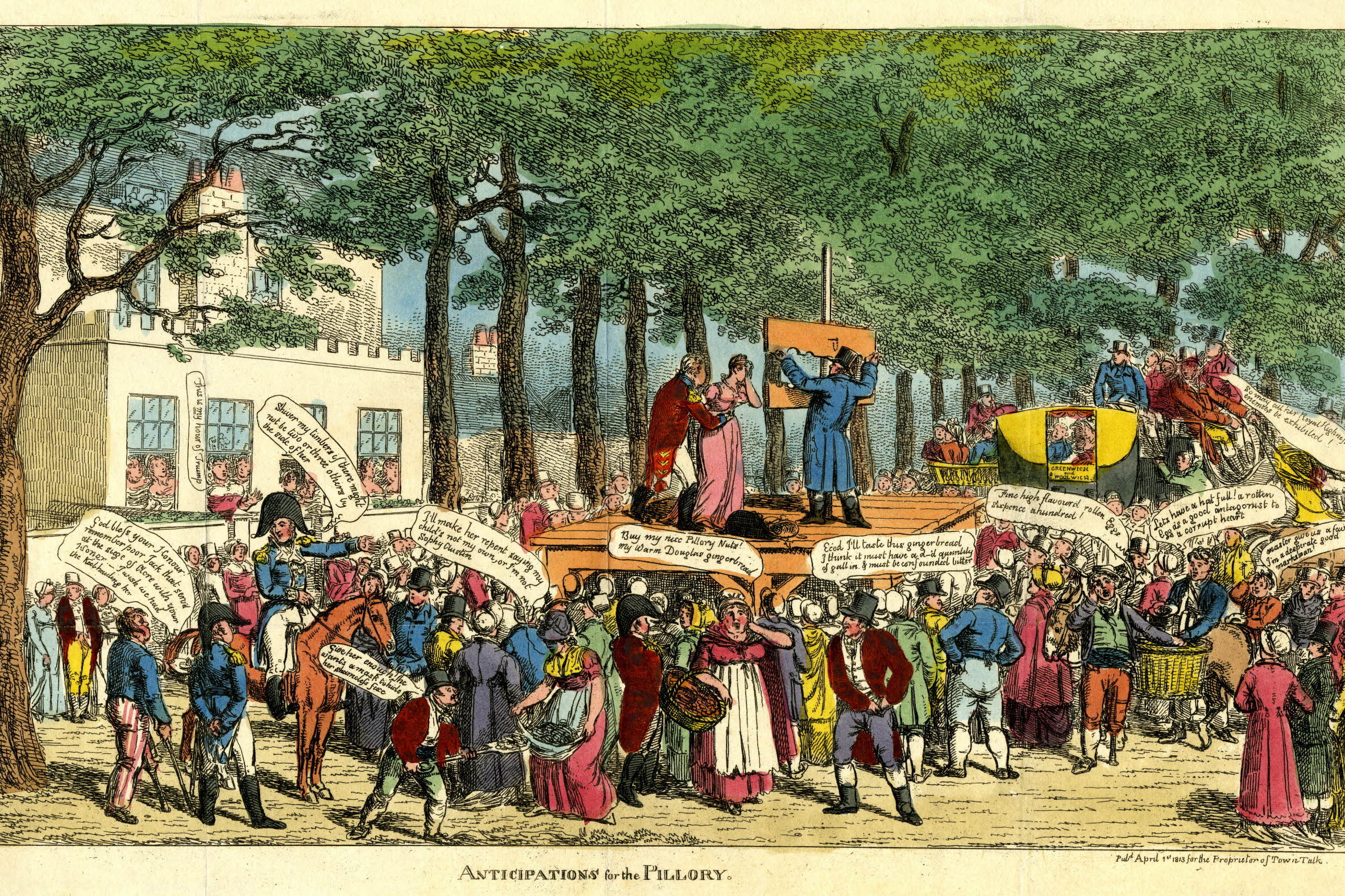
Getting caught for something as minor as cheating a customer or gossiping about the wrong person could land you in the pillory. This wooden contraption locked a person’s head and hands in place, forcing them to stand in a busy square while the townspeople had their fun. Rotten vegetables, mud, and sometimes even rocks were hurled at the unlucky soul. If the crowd was particularly riled up, the punishment could turn brutal, with people getting severely injured or even killed. The worst part? You had to stand there for hours or even days, unable to eat, drink, or defend yourself. The sheer humiliation alone was often enough to make people think twice about repeating their crime shares Colonial Williamsburg.
Once your time was up, you didn’t just get to walk away with your dignity in tatters—you often had to deal with long-term physical damage. Some people ended up with dislocated shoulders or permanent neck problems from the awkward positioning. Others left with deep emotional scars, knowing their entire community had laughed at and tormented them. The pillory was designed not just as a punishment but as a lasting reminder of your misdeeds. In many cases, the crime itself was barely worth the suffering. But in medieval society, even a petty mistake could make you the town’s entertainment for the day.
2. Ducking Stools: A Drowning Game for “Nuisances”
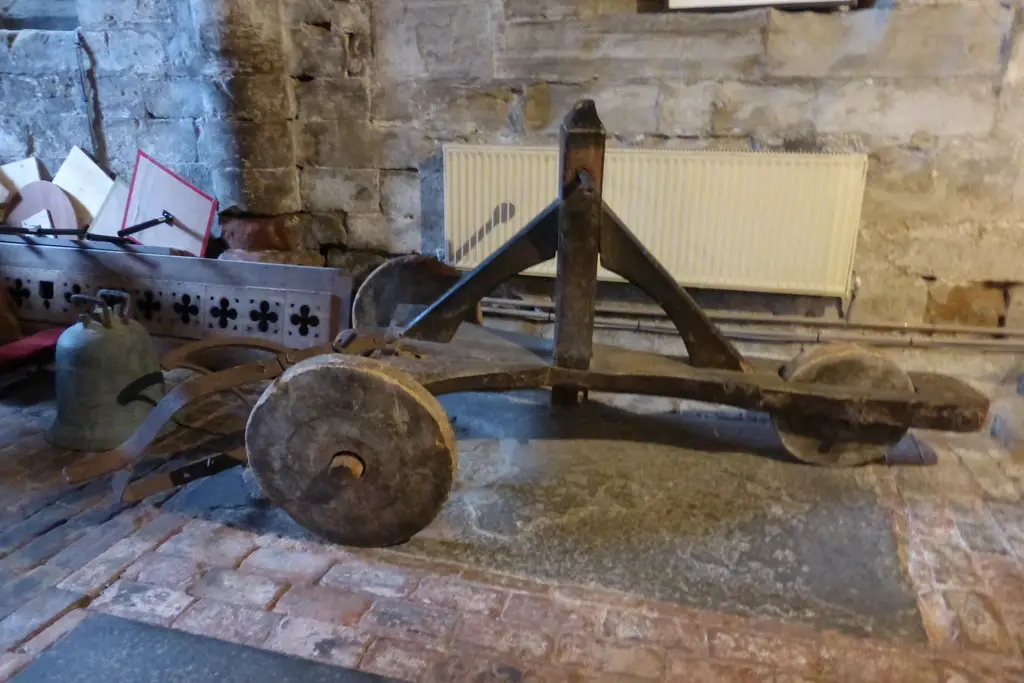
If you were a woman accused of being too argumentative or spreading rumors, the ducking stool might have been your fate. This punishment involved strapping the accused to a wooden chair attached to a long pole and dunking them into a river or pond. While the goal wasn’t necessarily to end a life, drowning was a real possibility. If the person survived, they would be soaking wet, freezing, and utterly humiliated. The idea was to “cleanse” them of their wrongdoing, but in reality, it was just a cruel way to make an example out of someone says Britannica.
For particularly stubborn or unpopular victims, the crowd might demand extra dunkings, making the experience even more dangerous. Some people lost consciousness, while others got sick from the exposure. Even if they walked away alive, their reputation often never recovered. This punishment was especially targeted at women who didn’t fit the expected mold of obedience and silence. In other words, if you talked too much or annoyed the wrong people, you might find yourself gasping for air in an ice-cold river.
3. Branding: A Permanent Reminder of Your Crime
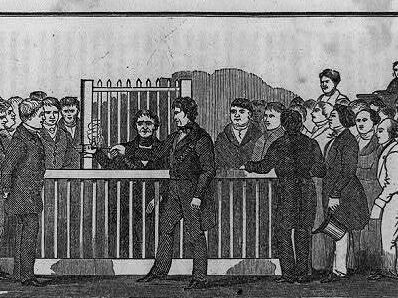
Some medieval punishments weren’t just about immediate suffering—they followed you for life. Branding was one of those punishments, leaving criminals with permanent scars that identified their wrongdoing. Thieves, for example, might have the letter “T” burned into their skin, while beggars could be marked with a “B.” The hot iron would be pressed against the skin, causing excruciating pain and often leading to infections. No painkillers, no numbing agents—just searing agony and the smell of burning skin adds Screen Rant.
Even after the wound healed, the mark remained, making it impossible to escape your past mistakes. Employers, shopkeepers, and even strangers could instantly recognize you as a former criminal. In some cases, people tried to hide their brands with clothing or makeup, but the stigma remained. Some resorted to even more drastic measures, like intentionally scarring themselves further to obscure the original mark. In a society where reputation meant everything, a single brand could ruin your entire future.
4. The Drunkard’s Cloak: Wear Your Shame
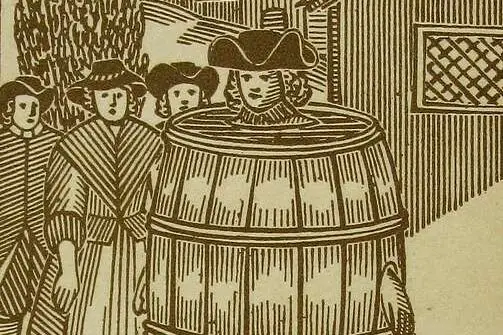
Getting caught drunk in public today might get you a fine or a night in jail, but in medieval times, you could end up parading through town in the Drunkard’s Cloak. This punishment involved locking the offender into a massive wooden barrel with holes for their head and arms. Forced to wander the streets, they became a walking joke for the entire town. The barrel was heavy and awkward, making movement difficult, and people were encouraged to mock and taunt the wearer says All That’s Interesting.
The humiliation didn’t stop there—sometimes, the punishment lasted for hours or even days. People were often denied food and water, making the ordeal even more unbearable. The sheer exhaustion and shame were supposed to scare others into avoiding excessive drinking. But let’s be honest—this likely just made the public even more eager to see someone else suffer for their amusement. The Drunkard’s Cloak was less about reforming behavior and more about putting on a cruel show.
5. Amputation: Lose a Limb for Stealing

Stealing a loaf of bread might not seem like a big deal, but in medieval times, it could cost you a hand. Amputation was a common punishment for theft, with the belief that if you stole with one hand, you wouldn’t be able to steal again if it was gone. Executioners used crude tools like axes or heated knives to carry out the sentence. Without modern medicine, infection was a major risk, and many people didn’t survive the punishment. Even if they did, life as a one-handed worker in a physically demanding world was incredibly difficult.
Some criminals tried to hide their injuries or pass off their missing limbs as accidents, but people weren’t easily fooled. Those who had been maimed were often left to beg for survival, as few employers wanted to hire them. The punishment wasn’t just about pain—it was about making sure the criminal remained marked and disadvantaged forever. A single mistake could mean permanent disability, proving just how harsh medieval justice could be.
6. The Scold’s Bridle: A Metal Cage for Your Mouth
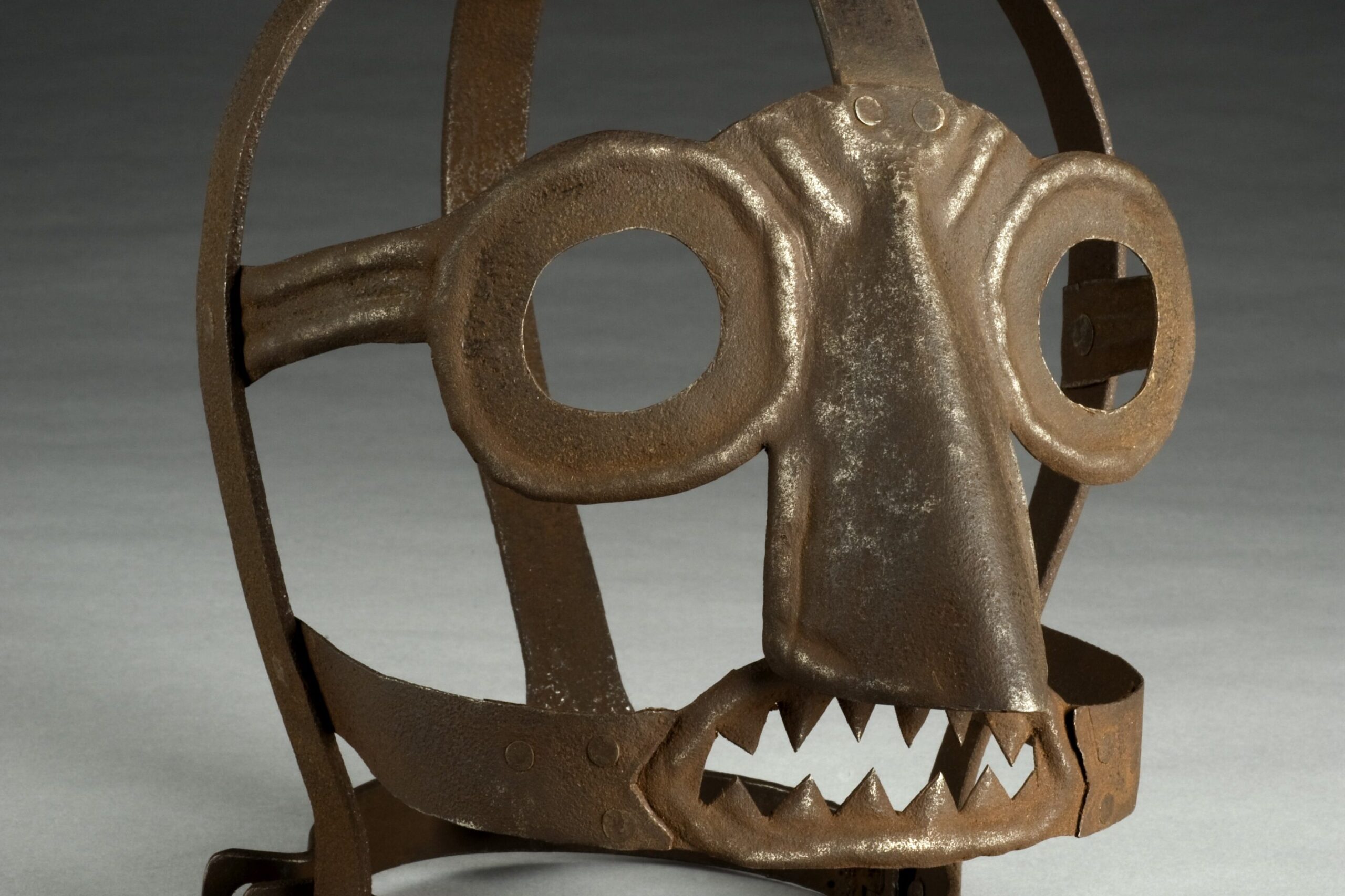
If you were a woman labeled as a “scold” (basically, someone who talked too much or argued), you might have been fitted with a Scold’s Bridle. This metal contraption looked like a cage that locked around the head, with a flat piece of iron pressing down on the tongue. Talking was impossible, and any attempt to move your mouth resulted in excruciating pain. Some bridles even had spikes to ensure the wearer didn’t dare try to speak.
The punishment didn’t end there—women were often paraded through the streets while wearing the bridle. Crowds would jeer, throw things, and sometimes even drag the victim around town. It was meant to silence and shame women into submission, reinforcing the idea that they should be seen, not heard. Some never fully recovered from the trauma, and many suffered long-term jaw damage. In a world where speaking out could get you locked in metal, silence was often the safest option.
7. The Stocks: An Invitation for Public Abuse
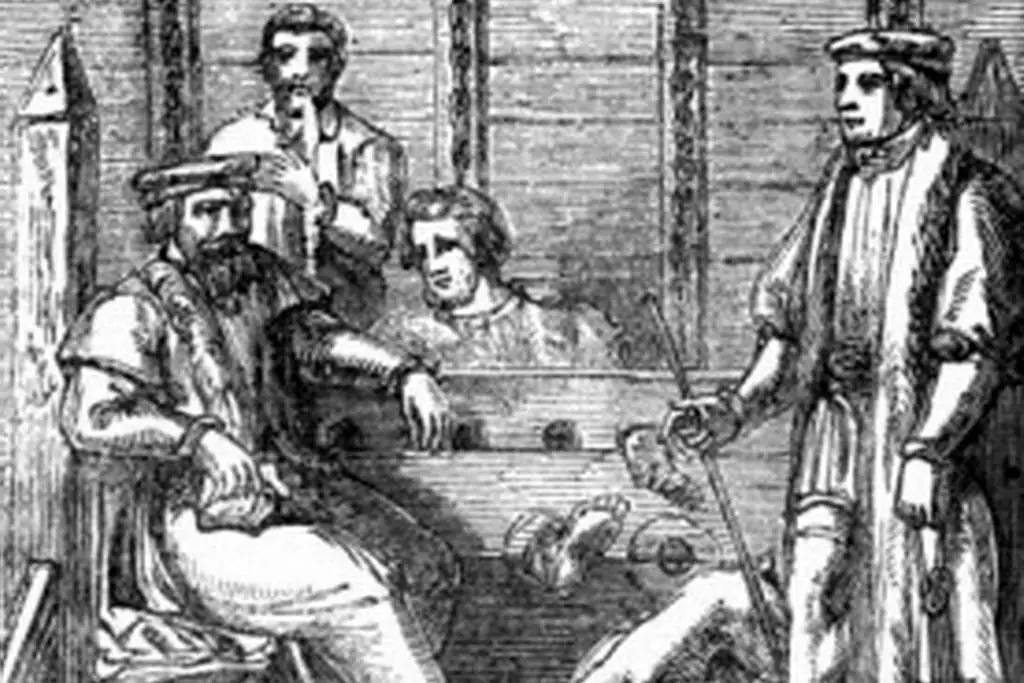
If you committed a minor crime, the stocks were waiting for you. Your feet were locked in place, sometimes along with your hands, and you were left in the town square for hours or even days. The punishment wasn’t just the discomfort—it was the fact that anyone passing by had free rein to insult, pelt, or otherwise torment you.
Victims were often left exposed to the elements, suffering through rain, heat, or bitter cold. The stocks didn’t just punish the guilty; they entertained the crowd. People would bring their children to laugh at the unfortunate soul trapped in place. It was a brutal reminder that even the smallest crime could make you a public punching bag.
8. Whipping: A Lesson in Obedience
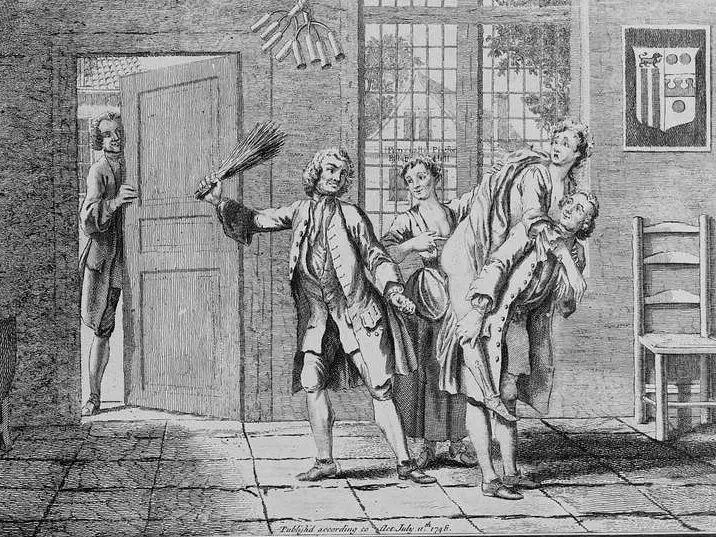
For many petty crimes, a good old-fashioned public whipping was the punishment of choice. Offenders were tied to a post, stripped to the waist, and flogged with a whip or a bundle of sticks. The number of lashes depended on the severity of the crime, but even a few could leave deep wounds. The whips sometimes had metal or bone fragments woven in, ensuring the pain was unforgettable. The idea was to make the punishment so unbearable that no one would dare repeat the offense.
Whippings were usually carried out in a town square so that everyone could watch. The crowd didn’t just stand by, either—they cheered, jeered, and sometimes even demanded more lashes. The victim was expected to endure the ordeal without crying out, though that was nearly impossible. Infection was a real danger, and many people were left permanently scarred. Even if you survived the beating, you had to live with the knowledge that everyone had seen your suffering.
9. The Wooden Horse: A Torturous Sit for the Disobedient
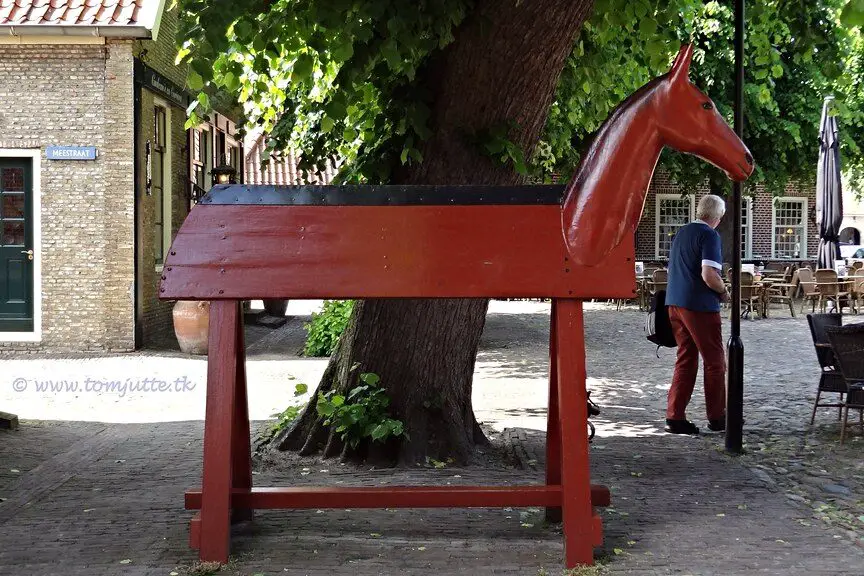
At first glance, the Wooden Horse sounds like a children’s toy, but in medieval times, it was a device of pure agony. The structure was essentially a sharp, triangular wooden beam where the accused was forced to sit, often with weights attached to their legs. The longer they were made to endure, the deeper the sharp edge pressed into their body. The punishment was used for everything from disobedience to minor theft, proving that medieval justice had no sense of proportion.
Victims often lost circulation in their legs, suffered severe bruising, or even sustained internal injuries. If left too long, the person might not even be able to walk afterward. The pain was excruciating, and the psychological toll of such a demeaning position only added to the suffering. The punishment was especially popular in military settings, where discipline was brutally enforced. It was meant to teach a lesson, but more often than not, it left victims broken beyond repair.
10. The
Stool: A Filthy Way to Teach a Lesson
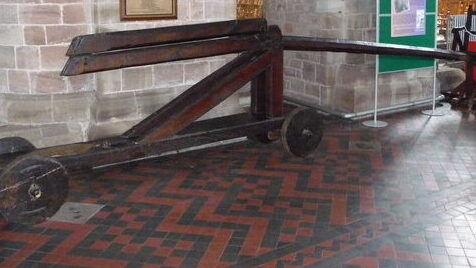
Similar to the ducking stool, the stool was used to punish people for “public nuisances,” such as scolding, gossiping, or even nagging their husbands. The victim was strapped to a chair and either dunked in water or simply left to sit in a humiliating position for hours. Unlike the ducking stool, which was used for repeated dunking, the stool was often placed in a foul location—sometimes over a cesspit or near a busy, dirty road.
Being forced to sit in filth wasn’t just disgusting—it was dangerous. The exposure to filth often led to infections and illnesses, making a simple punishment a potential death sentence. As with many medieval punishments, public humiliation was a key part of the ordeal. Townspeople would gather to mock and taunt the person as they sat helplessly. The punishment may have technically ended after a few hours, but the shame lasted far longer.
11. Mutilation: A Cruel “Correction” for Petty Crimes
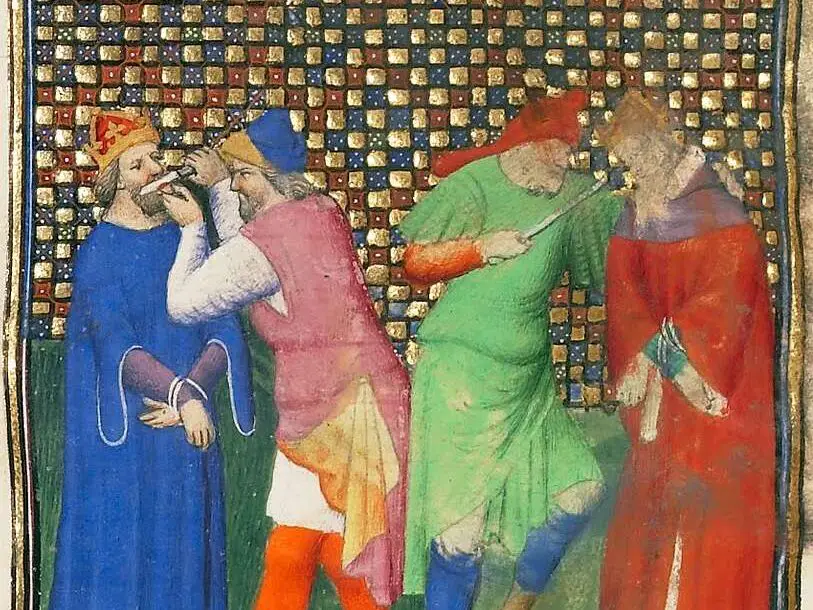
Some punishments didn’t just hurt in the moment—they left victims permanently changed. Mutilation was commonly used for crimes like lying, minor theft, or even breaking curfews. A thief might have their nose or ears cut off, ensuring that everyone could see their crime at a glance. In some cases, the tongue was removed for spreading falsehoods, permanently silencing the offender. These punishments were meant to be both painful and long-lasting, serving as a warning to others.
Without proper medical care, many people bled to death or succumbed to infection. Those who survived often faced a life of isolation, as their deformities made them instant outcasts. Some people tried to hide their injuries with hoods or scarves, but the damage was done. Employers were reluctant to hire someone with visible signs of past crimes, making survival nearly impossible. A single mistake could cost you more than just your dignity—it could take away your ability to live a normal life.
12. Tarring and Feathering: A Sticky, Fiery Nightmare
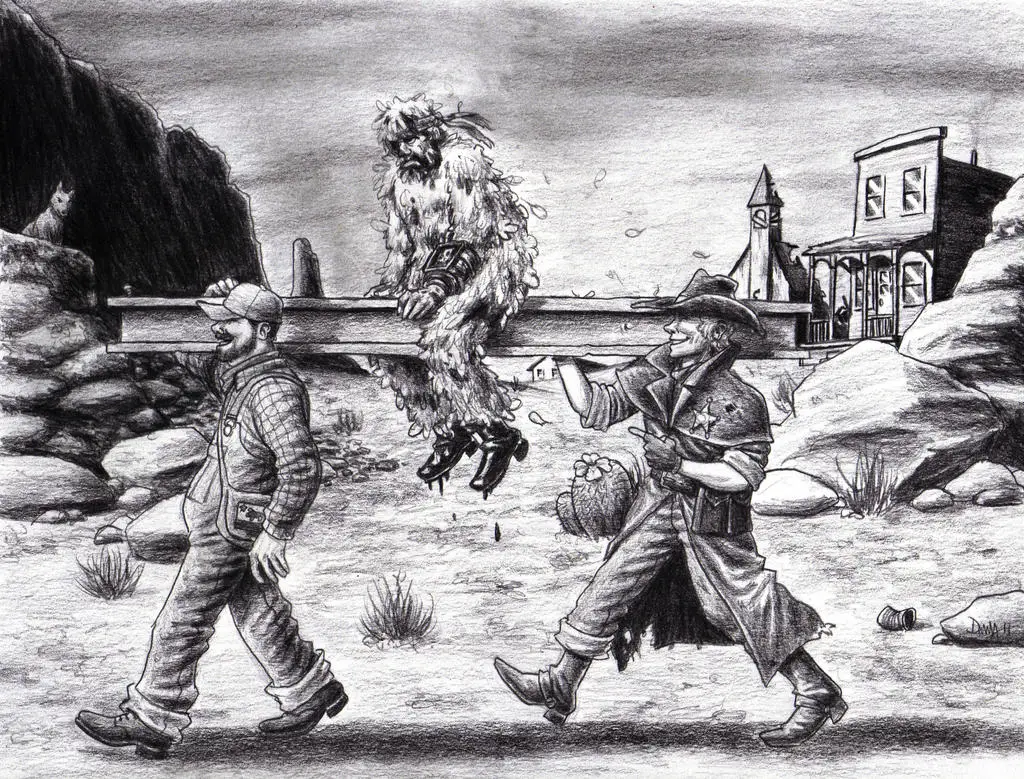
Tarring and feathering wasn’t just a punishment—it was a slow, torturous ordeal. The process started with hot tar being poured over the victim’s body, causing intense burns and sticking to the skin. Then, feathers were thrown on, making them look ridiculous as well as ensuring the tar stuck even deeper. The victim was then paraded through town while onlookers laughed, mocked, and sometimes even beat them. It was a punishment reserved for those who had angered the community, such as dishonest merchants or suspected traitors.
The pain didn’t stop once the crowd got bored. Removing the tar was excruciating, as it had to be peeled or scraped off, taking layers of skin with it. Many victims suffered permanent scarring or infections that led to death. Even if they survived, the memory of the agony and the public humiliation would haunt them forever. It was a punishment designed to send a clear message: betray the trust of your community, and you’ll suffer in ways you never imagined.
